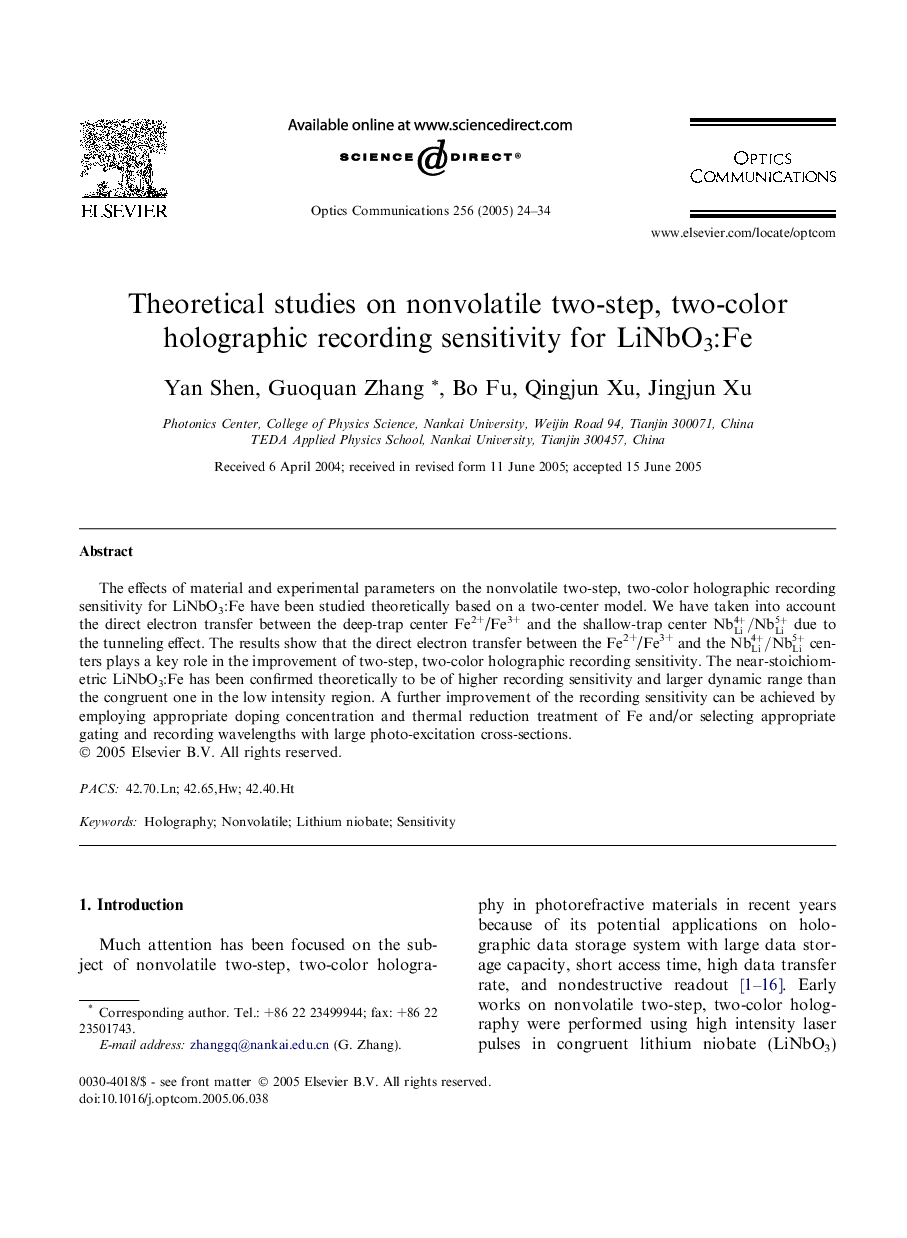| Article ID | Journal | Published Year | Pages | File Type |
|---|---|---|---|---|
| 9785526 | Optics Communications | 2005 | 11 Pages |
Abstract
The effects of material and experimental parameters on the nonvolatile two-step, two-color holographic recording sensitivity for LiNbO3:Fe have been studied theoretically based on a two-center model. We have taken into account the direct electron transfer between the deep-trap center Fe2+/Fe3+ and the shallow-trap center NbLi4+/NbLi5+ due to the tunneling effect. The results show that the direct electron transfer between the Fe2+/Fe3+ and the NbLi4+/NbLi5+ centers plays a key role in the improvement of two-step, two-color holographic recording sensitivity. The near-stoichiometric LiNbO3:Fe has been confirmed theoretically to be of higher recording sensitivity and larger dynamic range than the congruent one in the low intensity region. A further improvement of the recording sensitivity can be achieved by employing appropriate doping concentration and thermal reduction treatment of Fe and/or selecting appropriate gating and recording wavelengths with large photo-excitation cross-sections.
Related Topics
Physical Sciences and Engineering
Materials Science
Electronic, Optical and Magnetic Materials
Authors
Yan Shen, Guoquan Zhang, Bo Fu, Qingjun Xu, Jingjun Xu,
